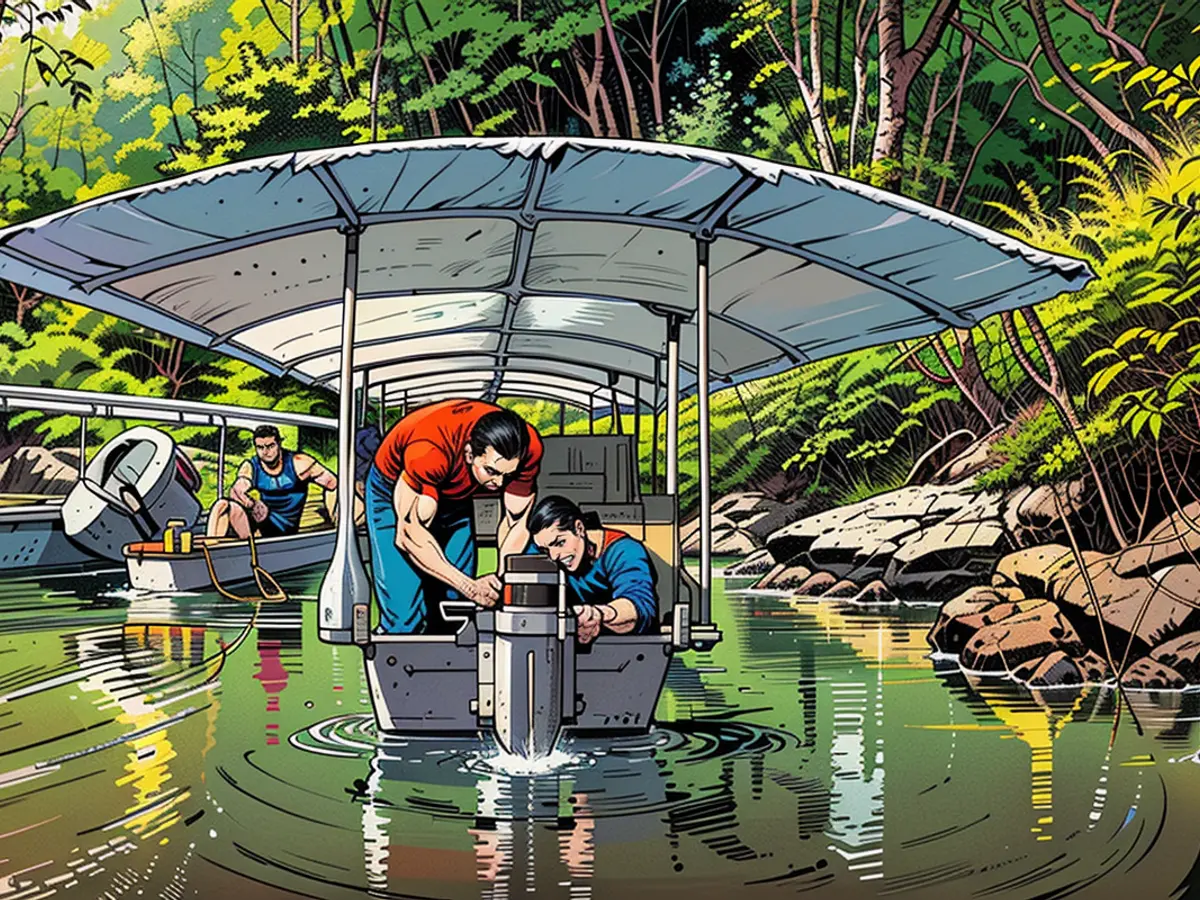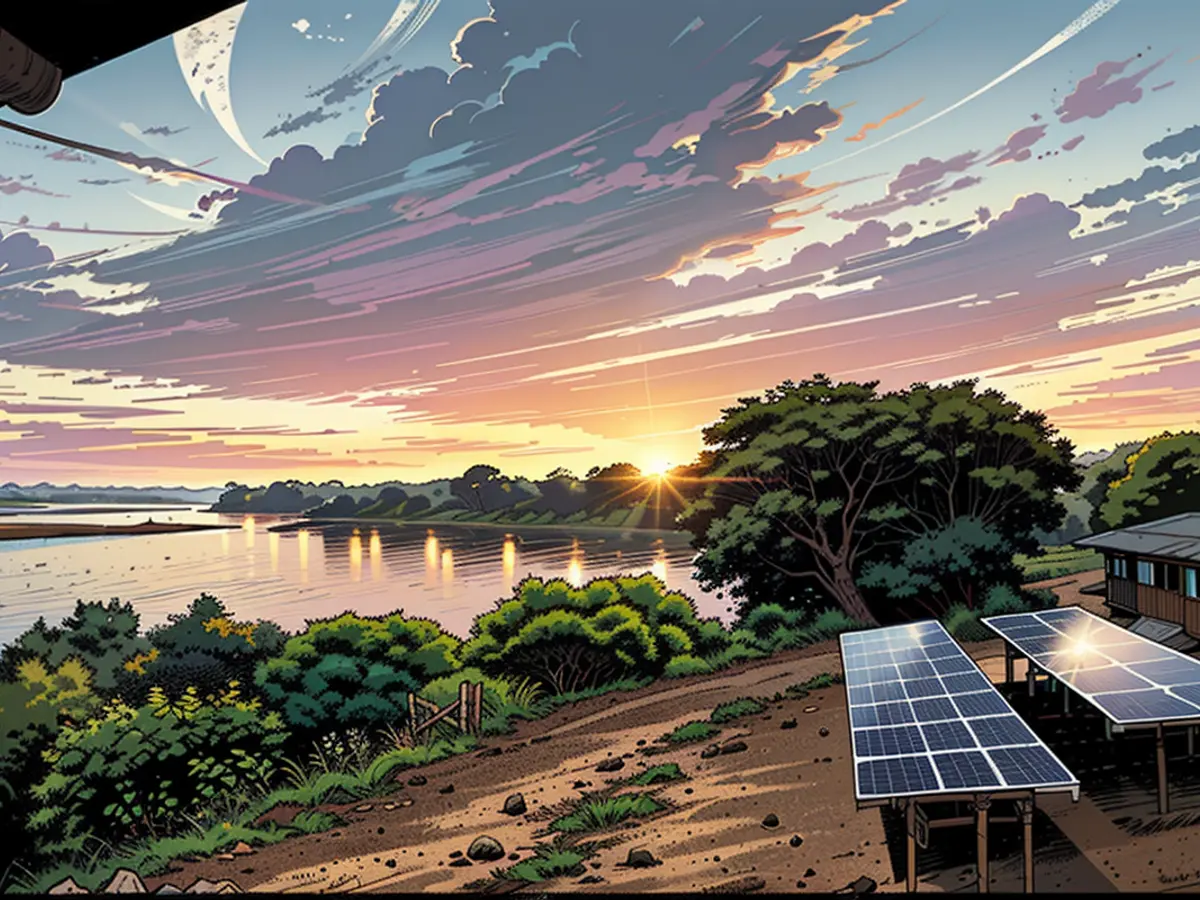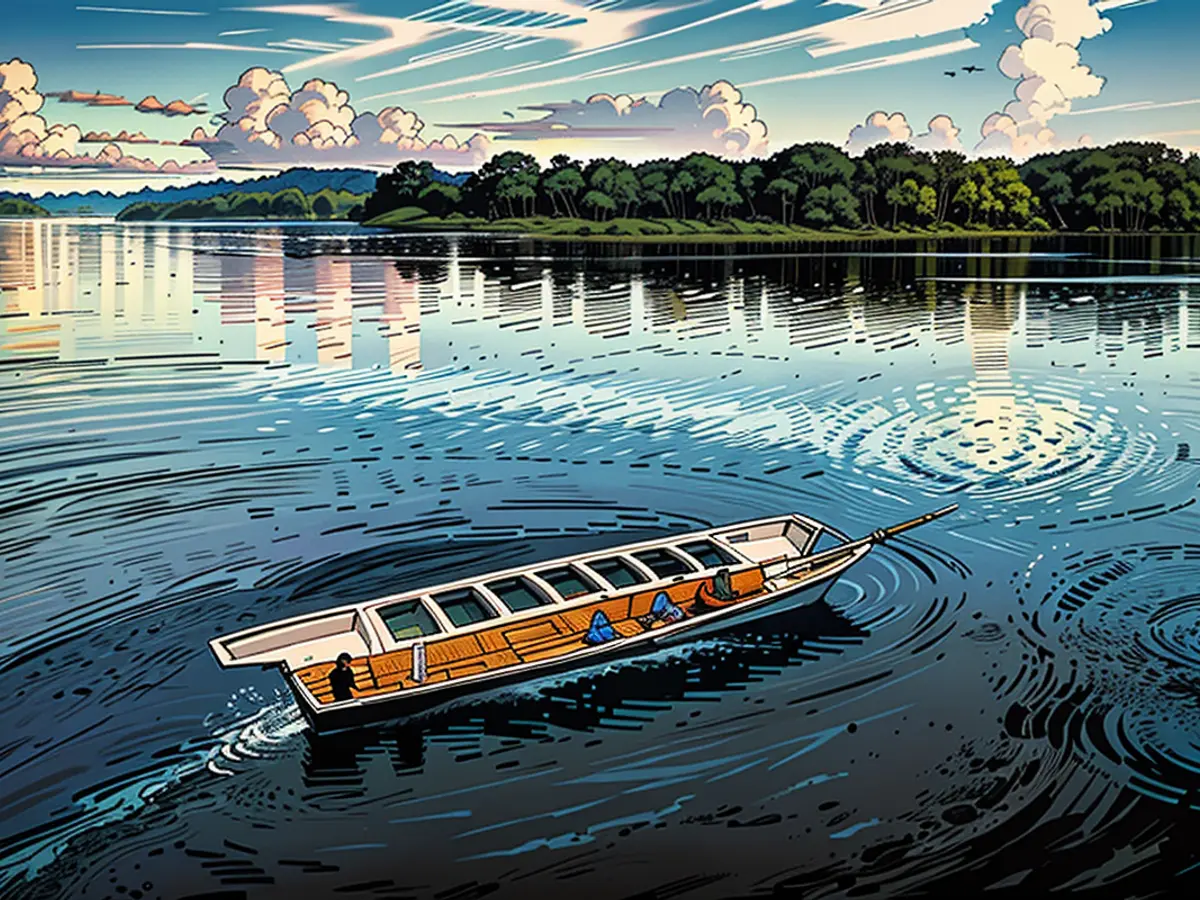Solar-powered boats are silently sailing through Ecuador’s Amazon rainforest
Five boats, each boat topped with a sleek solar-panelled roof, are being used by 12 indigenous Achuar communities across a stretch of eastern Ecuador bordering Peru. The boats have been provided by Kara Solar, a non-profit organization based in the region. Not only are the Achuar responsible for fixing, running and maintaining the boats — the solar vessels are shaping daily life for the community by offeringtransport for education, health services and eco-tourism.
For years, many Achuar here have used gasoline-powered boats on the river, but the fuel must be flown in by plane from Ecuador’s capital, Quito, making it more expensive and adding to the carbon emissions associated with its use.
“Local people (are) increasingly buying gasoline motors that use a lot of oil and contaminate the river,” said Angel Wasump, Kara Solar’s director of operations, who and a member of the Achuar community.
“Since the (solar) boats arrived, families have been giving up these motors completely,” he added.
Sustainable solar power
Kara Solar founder Oliver Utne traveled to Ecuador from Minnesota 16 years ago after graduating college. Working at an Achuar-owned local business in a remote Amazon community, he saw firsthand the difficulties people had in accessing basic resources such as electricity and transportation. It was then Utne realized the potential for using technology as a tool for the conservation of Achuar territory and culture.
“Before (visiting Ecuador) I’d only viewed technology as a threat to indigenous cultures. I think that was a very paternalistic point of view based on an overly romanticized idea of indigenous people,” he told CNN.
“They (the Achuar) showed me that they do have a desire for agency and autonomy. I realized that I wanted to help empower them to reach this goal.”

Utne returned to the US with newfound inspiration, studying solar energy before qualifying as a solar installer. He immediately returned to the Amazon and began working with the community to navigate the best use of solar technologies.
“The idea of (solar) boats at first was kind of a joke,” said Utne. “We’d talked about its feasibility, but no one had really taken it seriously.”
He said that in 2013 he collaborated with MIT and two Ecuadorian universities — Escuela Superior Politécnica del Litoral and Universidad San Francisco de Quito — on a study of river navigability and electric propulsion systems adapted for the Amazon.
“The study came back very positive; the solar boats could work if powered correctly,” he said. It also revealed that the boats only needed a relatively small motor to move a lot of people, requiring less solar panels.
The first electric boat was completed in 2016, named “Tapiatpia” after the legendary electric eel featured in Achuar folklore. Utne stresses that the Achuar community was consulted throughout the three-year design process.
Each boat varies in size, the biggest with capacity for up to 20 passengers. They travel at up to 12 miles (19 kilometers) per hour with a range of up to 60 miles (97 kilometers). If the boats’ electric batteries run out of power they can be charged via nine onshore charging stations, which are solar energy grids located in communities along the river. In addition to charging boats, these provide power for schools, internet access, computer labs and eco-lodges.
Kara Solar formally launched in 2018 and is staffed on the ground by members of the Achuar community. The organization estimates that the boats operating in Ecuador have completed over 300 trips in total, carrying over 1,000 passengers and collectively traveling over 450 kilometers per month. The most common uses are transporting local children to and from school and providing wildlife tours for eco-tourists
“These are not our boats, these belong to the indigenous people who are there, and we are their support system,” said Utne. “We are accompanying them and providing advice and sharing these lessons learned across the Amazon.”
As well as reducing carbon emissions and pollution, the silent vessels mean eco-tourists can get a closer view of wildlife without scaring it away.
“The boat serves as a tangible symbol of what conservation could look like,” said Wasump. “It’s (like) a return to what’s most important in Achuar culture. These boats have represented a way for us to reconnect with this vision of what development could look like.”
Growing the vision
Part of Kara Solar’s mission is to provide communities with technical training and skills development in solar installation, which is entirely led by Achuar technicians in the Achuar language. The organization has built four solar centers in Ecuador, providing an open space for educators and students, powered entirely by solar energy.

It has also adopted this model in other countries and earlier this year Kara Solar partnered with the Wampís Nation, in northern Peru, having installed two shuttle boats and two solar centers there in November 2023, with funding from the Welsh government.
In 2025, Kara Solar will launch a new project on the Kapawari River, in Pastaza, eastern Ecuador, that aims to replace 50 gasoline-powered boats with solar-electric ones. The initiative will connect four isolated settlements along the Kapawari, which also serves as a vital sanctuary for endangered pink river dolphins.
Cheryl Martens, director of the Institute for Advanced Studies in Inequalities at the San Francisco University of Quito, believes the model could be expanded. “Kara Solar has the potential to be scaled up, not only in terms of river transport systems within and beyond the Amazon,” she said. “The solar technology developed for this project is also providing sustainable solutions to communication systems such as high frequency radio in some of the most remote areas of the Amazon ... where cell phone communication is not available.
“The project has involved Achuar communities throughout and has trained Achuar technicians to install and fix the solar technology required for running the boats. For that reason, this solar canoe technology has a greater chance of success.”
Kara Solar’s executive director, Nantu Canelos, a former solar boat captain, agrees that community involvement is key. For him, true progress is only possible if the Achuar are leading the way, with support from others. “I want to invite everyone to join us in a collective effort to make these dreams come true in the Amazon, because the Amazon is truly at risk, and we can feel it here,” he said.
“The climate is changing, and we are experiencing those changes,” he added. “It’s also important for us to change ourselves from within our territory.
“This is a call to the global community, especially young people, to understand that the actions we take in the Amazon are crucial, not only for Indigenous people but for the entire world.”
The solar-powered boats from Kara Solar are not only beneficial for the Achuar community in terms of transportation for education, health services, and eco-tourism, but they also have a significant impact on the environment. With the replacement of gasoline-powered boats, the use of oil is reduced, and less contamination of the river occurs. (from the given text)
The initiative by Kara Solar to replace 50 gasoline-powered boats with solar-electric ones on the Kapawari River in Pastaza, Ecuador, not only reduces carbon emissions but also aims to protect endangered pink river dolphins that inhabit the river. (following from the given text)







